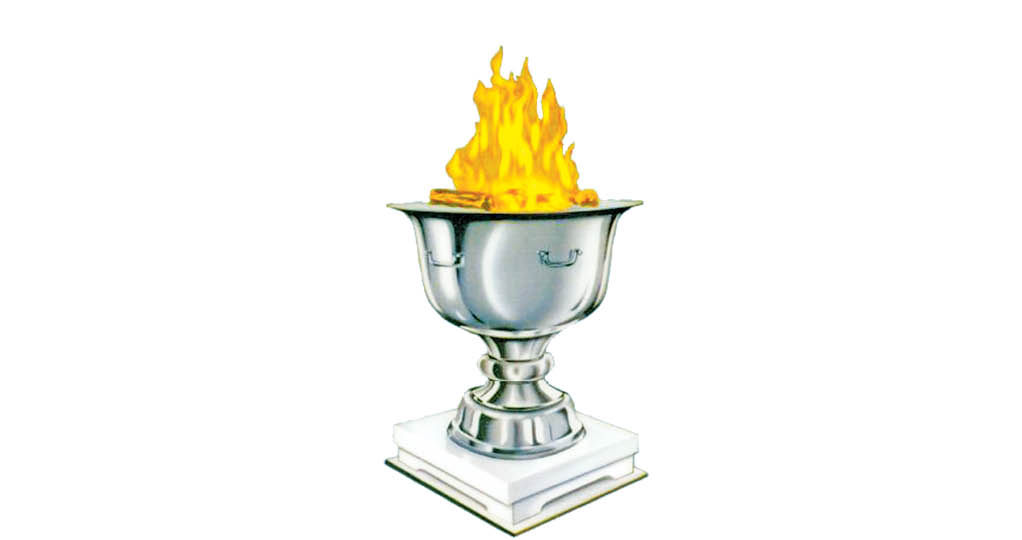 PT: What, as per our religious essence, should be the virtues of a true Zarthosti?
PT: What, as per our religious essence, should be the virtues of a true Zarthosti?
Er. Bhandara: I will read this out to you. “He is not great who is not great in righteousness, he is not rich who is not rich in righteousness, and he is not healthy who is not healthy in righteousness. The best man and the noblest man is the righteous man”. The virtues of a true Zarthosti should know that greatness has a short life. It is righteousness alone which lives forever. We should always say this to ourselves – let my goodness help others to be good; let me serve with my body, mind, heart and soul, for the service of man is Thy worship in deeds, Ahura Mazda. A true Zarthosti is the man of honesty, he speaks and does what he thinks, he means what he says, and his words have the value of a bond.
PT: How would you describe Zarathustra’s teachings in brief?
Er. Bhandara: In Zarathustra’s teachings, which are best reflected in his Gathas, we have hardly any mention of the ritualism of worship. Conduct and its moral motives such as Vohumano, Asha and Armaiti have received the sole intention in them. Zarathustra was the first prophet who emancipated religion from the narrowness of the tribal God, the God of the chosen people, and offered it to the universal man. This is a great fact in the history of religion.
PT: What ideally should the modern age Zarthosti child religiously follow?
Er. Bhandara: We are living in a new age and the children are born with the spirits of the times. Zoroastrian prayers contain various aspects, the most important of which is devotion to the creator and the spiritual and ethical laws of holy and righteous living. Our Kusti prayer is in itself a complete prayer for us Zoroastrians. Without understanding and making our daily prayer a living thing, how can we have faith, which is so beautifully taught in Gathic ‘Kem Na Mazda’ prayer, and how can we translate those beneficent teachings in our daily life? Thus the need of understanding the meaning and importance of our daily prayers will become abundantly clear to any devote Zoroastrian. This is what exactly needs to be imparted to the modern age Zarthosti child.
PT: What is the best path of living life in the right way, religiously?
Er. Bhandara: Life and its controlled desires are a part of creation. It is the aim of our religion to see that these are not abused but simply controlled. All truth should be revealed so that one lives in the right way and obeys one’s conscience, that love comes full circle and makes man one with God. Obedience, peace, charity, humility, truth and righteousness should prevail in every home, and the children should respect their parents at all times.
PT: How do our prayers benefit us at all 3 levels – Physical, Mental and Spiritual?
Er. Bhandara: Physical: Prayers give us good health; a relaxed mind gives health to the body, as it helps control blood pressure, blood sugar, hypertension and ulcers. It also increases immunity; stress is single most important factor that causes heart diseases and ulcers. It is scientifically proven that chanting prayers helps one relax, which is conducive to immunity. The Ardibehest Yast, Ahmai Raeshcha and Tandarosti, Mathrawani gives good health. Prayers also give protection to the body. They act as a shield because the words of prayers are for protection. Mental: Prayers give the following benefits to the mind: calmness and relaxation, joy, intuition, clarity of thought, tolerance and understanding. They give freedom from fear and insecurities, boost us with confidence, positive attitude to life and give power. Spiritual: Prayers protect our soul from unseen evil, and act like food and clothing for the soul. Prayer is a weapon against evil. It helps to receive blessings from Ahura Mazda, Yazads and Ameshaspands, and maintains the purity of soul, ‘Divine Energy’ (khoreh) and upliftment of the soul.
PT: A common query from some of our readers is which prayers are to be recited and in what order, during each Geh. Could you throw some light on that, please?
Er. Bhandara: HAVAN GEH: Kushti prayers, Sarosh Baj, Havan Geh, Khurshed and Meher Niyaish, Hormazd Yasht, Ardibehest Yasht, Atash Niyaish. RAPITHAWAN GEH: Kushti prayers, Sarosh Baj, Rapithawan Geh, Khurshed and Meher Niyaish, Hormazd Yasht. UZIRAN GEH: Kushti prayers, Sarosh Baj, Uziran Geh, Khurshed and Meher Niyaish, Sarosh Yasht Hadokht. AVISHTRAM GEH: Kushti prayers, Sarosh Baj, Avishtram Geh, Mahabokhtar Niyaish, Namaskar Cherag no, Sarosh Yasht Vadi and Nirang. USHEN GEH: Kushti prayers, Sarosh Baj, Ushen Geh, Sarosh Yasht Vadi.
You may recite as many Avesta prayers as you want during all Gehs.
- Ava Yazad Parab At Thana Patell Agiary - 30 March2024
- Cowasji Patell Agiary Celebrates 244th Salgreh - 24 February2024
- પંચગનીની ચોકશી દર-એ-મેહેરે 92મી સાલગ્રેહની ઉજવણી કરી - 6 May2023
